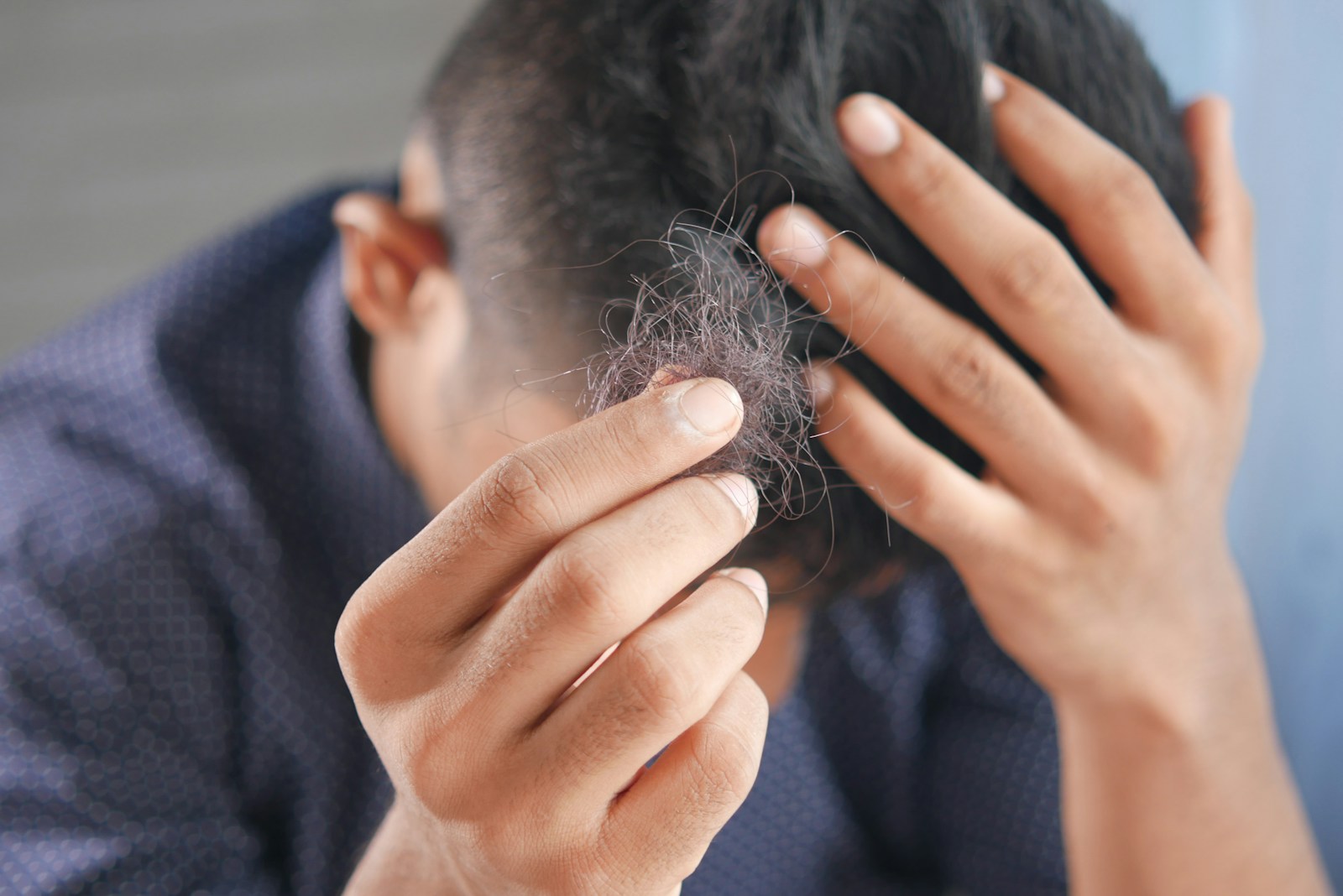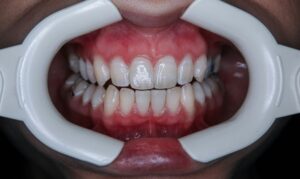Hair loss is a subject surrounded by misconceptions, with myths often overshadowing the actual facts. For millions of people, hair loss can be a source of anxiety and confusion, partly because of the conflicting information available. Whether you’re experiencing hair loss yourself or seeking to better understand the condition, separating fact from fiction is crucial for making informed decisions about prevention, management, and treatment.
In this detailed exploration, we’ll delve into 13 of the most common myths about hair loss, debunk them with facts, and provide a clearer understanding of what truly affects hair health.
Myth 1: Hair Loss Only Affects Men
Fact: Hair loss affects both men and women, though the patterns and causes may differ.
While male pattern baldness tends to dominate discussions about hair loss, women are also significantly affected. According to the American Academy of Dermatology, nearly 40% of women experience visible hair thinning by the age of 50. However, the patterns differ between genders. Men often notice a receding hairline or bald spots on the crown, while women typically experience diffuse thinning across the scalp.
For women, hormonal changes such as those associated with pregnancy, menopause, or conditions like polycystic ovary syndrome (PCOS) can exacerbate hair loss. Additionally, hairstyling practices, like tight ponytails or braids, can contribute to a condition called traction alopecia. Recognizing that hair loss is not gender-exclusive is essential for understanding the wide range of causes and tailored treatments for both men and women.
Myth 2: Hair Loss Is Always Hereditary
Fact: Genetics play a significant role, but other factors like stress, illness, and diet also contribute.
Hereditary hair loss, known as androgenetic alopecia, is a leading cause of thinning hair in both men and women, but it’s far from the only factor. External influences such as high stress levels, poor nutrition, and specific medical conditions can lead to temporary or permanent hair loss. For example, telogen effluvium is a condition triggered by significant physical or emotional stress, resulting in widespread hair shedding.
Nutritional deficiencies, particularly in iron, zinc, and vitamins like D and B12, can weaken hair health, making strands more prone to falling out. Illnesses such as thyroid disorders and autoimmune diseases like alopecia areata can also disrupt the hair growth cycle. A comprehensive evaluation by a dermatologist is key to identifying the underlying causes of hair loss, as not all cases are strictly genetic.
Myth 3: Wearing Hats Causes Hair Loss
Fact: Wearing hats does not lead to hair loss, as it does not affect hair follicles.
The belief that wearing hats contributes to hair loss likely stems from the misconception that they suffocate the scalp or impede blood circulation. In reality, hair follicles derive oxygen and nutrients from the bloodstream, not the external environment, so wearing a hat has no impact on follicle health.
However, hats that are excessively tight or worn for extended periods without proper hygiene can trap sweat and oils, potentially leading to scalp irritation or dandruff. While these issues might affect the scalp’s overall health, they do not cause permanent hair loss. Maintaining good scalp hygiene and ensuring your hats are clean can prevent these minor concerns without affecting your hair follicles.
Myth 4: Hair Loss Is Caused by Poor Circulation to the Scalp
Fact: Hair loss is not directly caused by poor scalp circulation.
Poor scalp circulation is often cited as a reason for hair loss, but this theory doesn’t align with scientific findings. Hair loss conditions like androgenetic alopecia are primarily caused by genetic and hormonal factors, not insufficient blood flow.
That said, a healthy scalp environment does benefit from proper circulation, as it ensures that hair follicles receive adequate nutrients and oxygen. Practices such as gentle scalp massages can enhance circulation and improve overall scalp health, potentially supporting stronger hair growth. However, they should be seen as supplementary measures rather than solutions for addressing significant hair loss.
Myth 5: Frequent Washing Causes Hair Loss
Fact: Washing your hair regularly does not cause hair loss.
The sight of hair strands in the shower drain after washing often leads people to believe that shampooing causes hair loss. In reality, these hairs are already in the natural shedding phase (telogen) of the hair growth cycle. Regular washing simply dislodges these hairs that were going to fall out anyway.
Over-washing with harsh shampoos can strip the scalp of its natural oils, leading to dryness or irritation, but this does not cause permanent hair loss. Choosing a mild, sulfate-free shampoo suited to your hair type and washing your hair as needed helps maintain a clean, healthy scalp without negatively affecting hair growth.
Myth 6: Hair Loss Is Irreversible
Fact: Many forms of hair loss are treatable or reversible with the right approach.
While some types of hair loss, like advanced androgenetic alopecia, are considered permanent, many other forms are temporary and reversible. For example, telogen effluvium caused by stress, pregnancy, or illness typically resolves once the underlying trigger is addressed. Similarly, hair loss due to nutritional deficiencies can often be reversed through dietary changes and supplements.
Even in cases of genetic hair loss, treatments like minoxidil, finasteride, and low-level laser therapy (LLLT) can slow the progression and promote regrowth. Hair transplant surgery is another effective option for restoring hair in areas of significant loss. Consulting with a specialist can help identify the best course of action based on your unique situation.
Myth 7: Stress Always Causes Hair Loss
Fact: Severe or prolonged stress can lead to hair loss, but not all stress results in thinning hair.
While stress is a well-known trigger for hair loss, it doesn’t affect everyone equally. Telogen effluvium, a stress-induced condition, occurs when a significant physical or emotional event disrupts the hair growth cycle, pushing more hairs into the shedding phase. However, short-term stress or daily pressures are unlikely to have a noticeable impact on hair growth.
Chronic stress, on the other hand, can exacerbate other underlying conditions that contribute to hair loss, such as hormonal imbalances or poor lifestyle habits. Managing stress through mindfulness practices, regular exercise, and adequate sleep can help maintain overall hair health.
Myth 8: Hair Loss Only Happens in Old Age
Fact: Hair loss can occur at any age, even in young adults and teenagers.
While it’s true that hair loss becomes more common with age, it can affect individuals in their teens or twenties, particularly in cases of androgenetic alopecia. Young adults may also experience hair loss due to medical conditions like alopecia areata or lifestyle factors such as poor nutrition, excessive hairstyling, or stress.
Addressing hair loss early, regardless of age, can lead to better outcomes. Seeking professional advice at the first signs of thinning can help identify the cause and implement appropriate treatments before the condition progresses.
Myth 9: Cutting Your Hair Makes It Grow Thicker
Fact: Cutting hair does not affect its thickness or growth rate.
The perception that hair grows thicker after a haircut is an illusion. When hair is trimmed, the blunt ends make it appear fuller, but the actual thickness and growth rate are determined by the follicles beneath the scalp.
However, regular trims do play an important role in maintaining healthy hair by removing split ends and preventing breakage. Healthy ends can give the appearance of thicker, more vibrant hair, but they do not influence new growth.
Myth 10: Hair Products and Styling Tools Cause Permanent Hair Loss
Fact: While excessive use of harsh products or heat tools can damage hair, they rarely cause permanent hair loss.
Frequent use of heat styling tools, chemical treatments, or tight hairstyles can weaken hair strands and lead to temporary breakage or shedding. However, permanent hair loss occurs only when follicles are damaged beyond repair, as seen in traction alopecia caused by prolonged tension.
To protect your hair, minimize the use of harsh chemicals, opt for heat protectants, and choose looser hairstyles. Taking breaks from styling and focusing on scalp care can also help maintain healthier hair over time.
Myth 11: Supplements and Oils Alone Can Cure Hair Loss
Fact: Supplements and oils can support hair health but are not standalone cures for hair loss.
While biotin, zinc, and omega-3 supplements can promote healthier hair in individuals with deficiencies, they cannot reverse genetic hair loss or address conditions like alopecia areata. Similarly, oils such as castor or coconut oil can improve scalp hydration and hair strength but do not affect the underlying causes of hair loss.
A comprehensive approach, including medical treatments like minoxidil, lifestyle changes, and proper scalp care, is often necessary for meaningful results. Supplements and oils should be seen as part of a broader strategy rather than standalone solutions.
Myth 12: Brushing Your Hair Too Much Causes Baldness
Fact: Gentle brushing does not cause baldness but helps maintain healthy hair.
Brushing hair too aggressively can lead to breakage and damage, but it does not cause permanent hair loss. Using a wide-tooth comb or a brush with soft bristles helps detangle hair without putting unnecessary strain on the strands.
Regular brushing also distributes natural oils from the scalp, improving hair’s appearance and maintaining a healthy balance of moisture. The key is to handle hair gently to prevent unnecessary stress or damage.
Myth 13: There’s Nothing You Can Do About Hair Loss
Fact: Numerous treatments and strategies exist to manage and prevent hair loss.
From over-the-counter treatments like minoxidil to advanced therapies such as platelet-rich plasma (PRP) or hair transplant surgery, there are many options available for addressing hair loss. Lifestyle changes, including a balanced diet, stress management, and good scalp hygiene, can also make a significant difference.
The first step to managing hair loss is seeking advice from a dermatologist or trichologist who can identify the underlying causes and recommend the most effective treatment plan for your specific needs. Taking proactive steps ensures you’re not just addressing symptoms but improving the overall health of your hair.
Conclusion
Hair loss is a multifaceted condition influenced by genetic, hormonal, lifestyle, and environmental factors. Understanding the myths and facts surrounding hair loss empowers you to take control of your hair health and seek appropriate solutions. By debunking misconceptions and focusing on evidence-based strategies, you can make informed decisions that support both your confidence and well-being.




